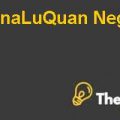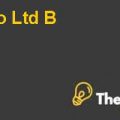
MARKET ENTRY AND EXIT
HP entered the ultrasound imaging field in 1980 with its model 77020 system meant for both radiology and cardiology applications. With limited success in radiology, the company started concentrating on cardiology in 1982 and soon emerged as the leader in this segment. ISY became a business unit profit center within MPG in 1981. In 1991, majority of ISY revenues were in the United States with an emphasis on cardiology systems. The movement from a single high end product to multiple products created positioning issues. Field people reported spending much more time competing with our old system platform. Consequently, slower market growth and a difficult corporate financial situation in the late 1980s placed pressure on costs across all business units and functional areas of HP.
The ISY culture was technology driven and R&D failed to meet the competition. ISY segmented the cardiology ultrasound market by product and customer type. Acuson’s entry into cardiology focused on the high end and performance driven customers, while Toshiba followed the price/ performance buyer.
DISTRIBUTION CHANNELS
The nature of distribution channels for Sonos 100 C/F was outstanding. Competitors had about 20 direct sales people in the United States, generating $500,000 to 1,000,000 in the sales annually with an average of about $800,000 per person. Field operations management estimated its fully-burdened cost per rep. at about $200,000 annually, which meant that the selling costs were 25-30 percent of sales.
The two extensive distribution channels are Dealers and Sales rep. Dealers lack in clinical expertise and sales skills to deal with the product, while budget constraints make it impossible to add more sales people. Consequently, the remaining two alternatives are; direct sales channel and independent manufacturers’ reps.
According to marketing manager at HP, the distribution channel in this segment must reach geographically dispersed customers with a product that, because of its reasonable price, must be sold efficiently.
The regions that its distribution channels must cater include five cities of United States including: New York, L.A., Chicago, San Francisco and Miami, where cardiology exams are conducted by Internal Medicine Physicians.
ISY made distribution channels with direct sales forces due to problems with MR turnover, the cost of training and monitoring MRs and “customers” desired for a long-term relationship with the vendor.
The direct sales force is well-trained and knows the full product line. It can offer a complete solution to any cardiologist interested in ultrasound. In addition, while non-hospital customers are price sensitive, ultrasound equipment is mounts up to a lot of money relative to their budgets; so they expect direct representation, especially when the competitors are reaching them with the direct sales force. As MRs work on the commission, they do not spend much time on developing a market or providing demonstrations and follow-up service. ISY reps. may need more training on negotiations, pricing and reimbursement practices in the private-office market. These skills can be taught but they don’t have loyalty to HP.
There are many advantages of having MRs;:
Sonos 100 C/F is the most technically sophisticated and highly-priced product offered by an MR who typically sells a broad range of diagnostic products. The product has been designed for easy use, and an MR is very capable of demonstrating it in the physician’s office. Sales Rep. may not have technical knowledge as direct sales force has but they are experienced sales people with great negotiating skills and detailed knowledge of physician reimbursement procedures.
However, the cost of having MRs in the distribution channels is very high. It includes 15 percent commission, product training to these newly recruited reps., inventory on consignment for the reps. and credit and collection services for them. To manage the MRs, a program manager is also required. So, the overall MR’s cost per order dollar is closer to$.40. It includes administrative overhead and also factors in some pre-sale support costs that are utilized by the bulk of MR costs and variable expenses.
Several MPG sales districts had utilized MRs in the past with varied results. MRs require training, demonstration equipment and commissions but they are not directly under the control of sales manager. MRs cannot be asked to write a sales plan or submit monthly forecasting so they are also not given support in joint programs, qualified leads, telemarketing support and easy access to demo equipment.
The support facility is another function related with distribution. The support organization at ISY encompassed eight repair districts and four “application” districts where customer engineers repaired equipment and clinical specialist performed product demonstrations and posted sales support........................................
This is just a sample partial case solution. Please place the order on the website to order your own originally done case solution.












